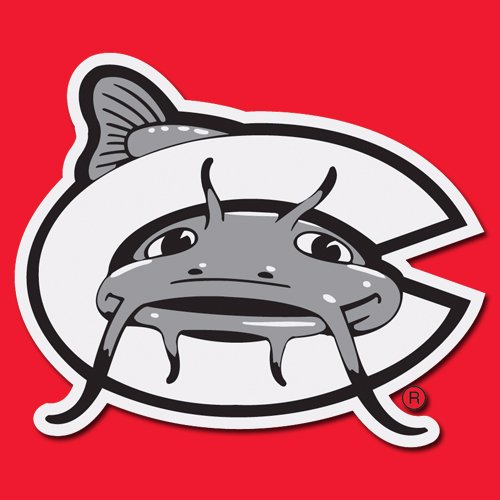From 2005 through 2016, the Milwaukee Brewers partnered with the Brevard County Manatees for player development in the high-A level Florida State League. It wasn’t exactly a fruitful pairing – the Manatees had only four winning seasons while fielding Milwaukee’s prospects, winning one division title and appearing in the playoffs on only two occasions over 13 seasons. Following the completion of a dismal 40-97 campaign in 2016, the worst record in the league by 18 games (and the worst record among all full-season affiliates at every level of the minor leagues), the player development contract between the two clubs expired. Rather than re-up with Milwaukee, the Manatees relocated their franchise to Kissimmee, re-branded themselves as the ‘Florida Fire Frogs,’ and signed a four year contract to partner with the Atlanta Braves.
A new @FloridaStateLg team will debut in Kissimmee in 2017 as #Braves affiliate. Welcome to the Florida Fire Frogs! https://t.co/97H8yqbnji pic.twitter.com/G74thm6VIe
— MiLB.com (@MiLB) October 26, 2016
All signs seemed to point to the Brewers being forced to partner with Lancaster of the notoriously hitter-friendly California League, which would have been a player development nightmare. However the front office was able to instead forge a midnight deal with the Carolina Mudcats, convincing the Mudcats’ ownership group to partner with the Brewers rather than the Colorado Rockies just prior to the deadline for signing with affiliates.
The Carolina League was long an eight team league based mostly on the southeastern coast of the United States, with teams in North Carolina, South Carolina, Virginia, Delware, and Maryland. With the folding of two franchises in the California League, two new clubs are being added to the Carolina League, which will make it a ten team league in 2017. The league figures to set up like this next season:
| Frederick Keys | Frederick, Maryland | Orioles |
| Lynchburg Hillcats | Lynchburg, Virginia | Indians |
| Potomac Nationals | Woodbridge, Virginia | Nationals |
| Wilmington Blue Rocks | Wilmington, Delware | Royals |
| Carolina Mudcats | Zebulon, North Carolina | Brewers |
| Myrtle Beach Pelicans | Myrtle Beach, South Carolina | Cubs |
| Salem Red Sox | Salem, Virginia | Red Sox |
| Winston-Salem Dash | Winston-Salem, North Carolina | White Sox |
| Kinston TBA | Kinston, North Carolina | Rangers |
| Fayetteville TBA | Fayetteville, North Carolina | Astros |
The Myrtle Beach Pelicans have captured the last two league championships, which isn’t that big of a surprise considering the renaissance the Cubs have experienced both with their major league and minor league systems. The Mudcats, however, haven’t experienced much success of late. They haven’t won a division title since 2011 and were the worst team in the league in 2016 with a 52-87 record, so ownership will be hoping that a partnership with the Brewers can bring some winning baseball back to Zebulon.
On the whole, the Carolina League is a more offense-friendly league than the Florida State League. That’s not to say that the Carolina League is a hitter’s paradise, however; the high humidity of the FSL is known for suppressing offense. The eight teams that made up the Carolina League in 2016 averaged 4.52 runs per game and a .718 OPS, while the 12-team FSL averaged only 4.04 runs per game with a .677 OPS. According to Baseball America’s park factors for each league, five of the eight parks in the Carolina League were either neutral or favored hitters; only six of the 12 Florida State League ballparks were neutral or favored hitters.
Park factors for Florida State League. High HR rates at division-rival Daytona and Lakeland help neutralize Clearwater HR factor. pic.twitter.com/7gf4QNCQZi
— Matt Eddy (@MattEddyBA) October 4, 2016
The Brewers will be moving out of Space Coast Stadium in Viera, Florida, where the Manatees had played since 1994 before their relocation this winter. A cavernous ballpark with a huge outfield, the dimensions of the park are 340 feet down the right and left field lines and 404 feet to center field. Only one FSL park, the home of the Clearwater Threshers, suppressed runs at a greater rate than Space Coast Stadium did in 2016 (100 is neutral, above favors hitters and below favors pitchers). Space Coast Stadium was the fourth-most difficult park to hit home runs in, as well.
Carolina League park factors for today's Top 20 Prospects by @LacyLuskBA. Frederick again plays extreme for HRs https://t.co/TSx3RKPB9v ($) pic.twitter.com/tX6PHNV9z3
— Matt Eddy (@MattEddyBA) October 5, 2016
Milwaukee will now be sending their minor leaguers to play in Five County Stadium, which was built in 1991 and renovated in 1999. It’s 330 feet down the line in left field and an even 400 feet to straight away center, but right field does feature a short porch of just 309 feet. Even with those relatively hitter friendly dimensions, however, Five County Stadium was the worst park for run scoring in the 2016 Carolina League. The park had the league’s fourth-lowest home run factor and third-lowest BABIP factor, both of which favor pitchers.
Overall, it shouldn’t be a huge transition for the Brewers’ high-A affiliation to move from Brevard County to Carolina. Though the Carolina League promotes more offense than the Florida State League, both Space Coast Stadium and Five County Stadium have been among the most pitcher-friendly parks in their respective leagues. That should bode well for high-profile arms like Marcos Diplan, Devin Williams, and Miguel Diaz who figure to see time in the Carolina League next season, though hitters like Trent Clark, Lucas Erceg, and Jake Gatewood may end up doing most of their damage on the road.
